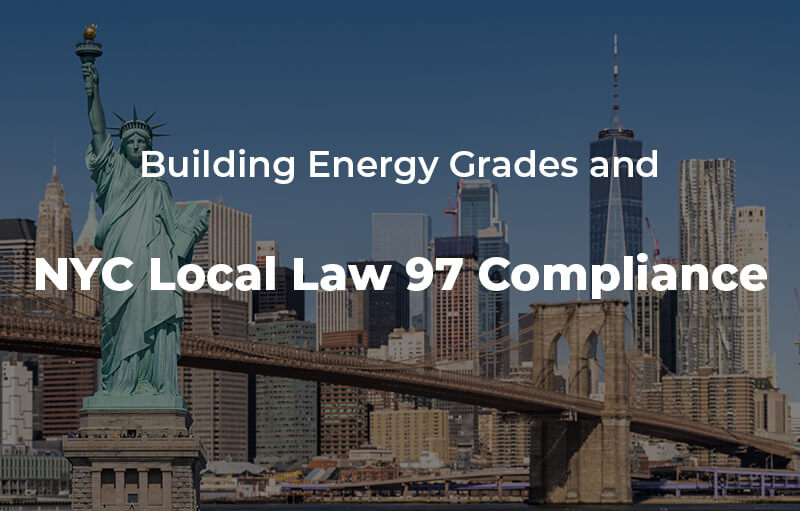
02 Jun Building Energy Grades and Local Law 97 Compliance in NYC
Introduction:
As the world grapples with the challenges of climate change, cities are taking bold steps to reduce their carbon footprint and promote sustainability. New York City, known for its iconic skyline, is at the forefront of this movement with the implementation of Local Law 97. This groundbreaking legislation aims to reduce greenhouse gas emissions by targeting large buildings, which account for a significant portion of the city’s overall emissions. One crucial aspect of compliance with Local Law 97 is obtaining and maintaining Building Energy Grades. In this blog post, we will explore why these grades are important and how they contribute to achieving the goals of the law.
Understanding Local Law 97:
Local Law 97, passed in 2019, sets ambitious carbon emission limits for buildings over 25,000 square feet in NYC. The law establishes emission caps based on building type, and the limits become progressively stricter over time. By 2030, buildings covered by the law must reduce their emissions by 40%, and by 2050, the reduction target increases to 80%. Non-compliance with these targets can result in substantial penalties.
Building Energy Grades Explained:
Building Energy Grades are a critical component of Local Law 97 compliance. They provide a standardized way to assess and compare the energy efficiency of buildings. Just as a restaurant receives a letter grade for its sanitary conditions, buildings receive a grade ranging from A to F based on their energy performance.
The grades are calculated using an energy performance metric called Energy Utilization Index (EUI). The EUI measures the energy consumed per square foot of the building annually. Buildings with lower EUI scores are more energy-efficient and achieve higher grades, while those with higher EUI scores receive lower grades.
Importance of Building Energy Grades for Local Law 97 Compliance:
Benchmarking and Transparency: Building Energy Grades promote transparency and allow building owners, tenants, and the public to compare the energy performance of different buildings. This information empowers stakeholders to make informed decisions about energy consumption and encourages building owners to improve their energy efficiency.
Compliance Assessment: Building Energy Grades serve as a tool for assessing compliance with Local Law 97. To meet the emission reduction targets, building owners need to ensure their properties achieve acceptable grades. Regular assessment of grades helps track progress towards compliance and identifies areas for improvement.
Incentives and Financing Opportunities: Building owners who achieve higher energy grades may become eligible for various incentives and financing opportunities. These can include grants, tax incentives, rebates, and access to low-interest loans. By improving their building’s energy efficiency and earning higher grades, owners can potentially benefit from these programs, reducing the financial burden of compliance.
Market Value and Tenant Attraction: Energy-efficient buildings with higher Building Energy Grades tend to have higher market value and appeal to tenants seeking sustainable spaces. Many businesses and individuals prioritize environmental responsibility and are more likely to choose buildings that prioritize energy efficiency. Higher grades can also enhance a building’s reputation and make it more attractive for prospective tenants.
Improved Energy Efficiency: Ultimately, Building Energy Grades encourage building owners to invest in energy-saving measures and upgrades. By striving for higher grades, owners are motivated to implement energy-efficient technologies, upgrade insulation, optimize HVAC systems, and adopt other sustainable practices. These improvements lead to reduced energy consumption, lower operating costs, and a greener future for NYC.
Conclusion:
Building Energy Grades play a crucial role in ensuring compliance with Local Law 97 and achieving NYC’s emission reduction targets. By providing transparency, assessing compliance, and offering incentives, these grades encourage building owners to prioritize energy efficiency. They also contribute to the overall market value of buildings and attract environmentally conscious tenants. Embracing Building Energy Grades and striving for higher grades is a win-win situation for building owners, tenants, and the environment, as it leads to reduced energy consumption, cost savings, and a more sustainable future for New York City.
